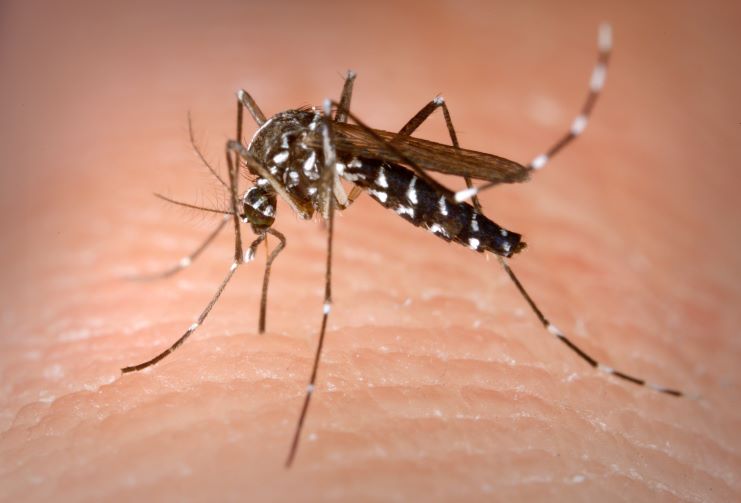A legal framework for vector-borne diseases and land use
 104th Annual Meeting: Bridging Communities and Ecosystems: Inclusion as an Ecological Imperative
104th Annual Meeting: Bridging Communities and Ecosystems: Inclusion as an Ecological Imperative
July 15, 2019
For Immediate Release
Contact: Zoe Gentes, 202-833-8773 ext. 211, gro.asenull@setnegz
Vector-borne diseases cause more than 700,000 deaths and affect hundreds of millions of people per year. These illnesses – caused by parasites, viruses, and bacteria transmitted by insects and animals – account for more than 17% of all infectious diseases on Earth.
While many emerging infectious diseases (EIDs) are preventable through informed protective measures, the way that humans alter our landscape – such as for farming and urban growth – is making this task more difficult.
Human-induced land use change is the primary driver of EIDs, including those carried by mosquitoes such as malaria, dengue, Zika, EEE, and West Nile. Why, then, does land-use planning often fail to recognize the effects these changes have on the risk of spreading disease?
Patricia Farnese, an associate professor of law at the University of Saskatchewan, will offer a legal perspective on infectious disease management with specific reference to vector-borne diseases at the Ecological Society of America’s Annual Meeting in August.
“My goal is both to educate and to discuss how land-use planning can be different,” says Farnese, who teaches property, agriculture, and wildlife law and researches ethical questions that arise when conservation and human rights collide.

An Aedes albopictus mosquito drinks from a human host. This mosquito has become a significant pest in many communities because it closely associates with humans. It is an important vector for the transmission of many viral pathogens, including the yellow fever virus and dengue fever, as well as being capable of hosting the Zika virus, and is considered a potential vector for Zika transmission among humans. Photo courtesy of James Gathany / CDC.
When humans use more land for agriculture like farming, new pathways are introduced for EIDs to spread. Farnese says providing farm animals with sanitary, appropriate living conditions that are not overcrowded is extremely important. “You also want to make sure that farm animals are separated from wild animals,” she says. “The spread of chronic wasting disease (CWD), for instance, is directly tied to the contact between wild animals and with captive animals that have CWD. It’s not transferable to humans, although there are fears that it will mutate and infect humans or animals in agriculture.”
People who are the poorest often suffer the most. The growth of urban slums is another land use change largely driving the spread of EIDs. Unsafe water, poor housing conditions and poor sanitation are standard conditions for those living in urban slums that contribute to the spread of EIDs. Inadequate waste management allows mosquitoes to easily breed and spread disease to large populations.
Farnese says there are many reasons that land-use planning often fails take human health into consideration and to recognize the risk of spreading disease, including the fact that the legal jurisdictions for health and land-use are often not held by the same level of government. Most land-use planning occurs at the local level, while action to prevent and mitigate infectious diseases often needs to be taken at a broader scale to be effective.
The biggest failing, according to Farnese, is that there are no legal mechanisms requiring land-use planning to do so. “Current frameworks for land-use planning are very good at protecting current uses, especially in urban areas,” she explains. “But what of the rest of the environment? Rarely do places other than extraordinary places, such as national parks, get land-use planning attention.”
In the face of increasing EIDs as land-uses change in response to a changing climate, Farnese calls for improved models and legal guidelines for land-use planning that are adaptive to future uses and that address natural landscapes outside of urban areas. Specifically, she calls for legal frameworks that mandate both planning at the landscape scale and consideration of not just desired human land-uses, but also how they impact disease risk.
This symposium talk, “Land-use planning at the landscape scale: Opportunities and challenges for vector-borne disease control,” is part of a session on land use change and vector-borne diseases. Other presentations in the session include:
- The impacts of changing land use on vector-borne diseases in urban and peri-urban landscapes. Steven W. Seagle, Department of Biology, Appalachian State University
- Effects of land-use on tick-borne disease risk in central Kenya. Brian F. Allan, Department of Entomology, University of Illinois at Urbana-Champaign, and Felicia Keesing, Program in Biology, Bard College
- Applying host/vector/pathogen genetics to explain vector-borne disease across variable landscapes: The case of Chagas disease in the southern U.S. Sarah A. Hamer, College of Veterinary Medicine, Texas A & M University, College Station, TX
SYMP 1-6 – Land-use planning at the landscape scale: Opportunities and challenges for vector-borne disease control
- Monday, August 12, 2019 4:10 PM
- Kentucky International Convention Center – Ballroom E
- Patricia Farnese, University of Saskatchewan
- Presentation abstract
- Contact: ac.ksasunull@esenraf.aicirtap
###
2019 Annual Meeting in Louisville, Kentucky
Bridging Communities and Ecosystems: Inclusion as an Ecological Imperative
11-16 August 2019
Ecologists from 50 U.S. states, U.S. territories, and countries around the world will converge on Louisville, Kentucky this August for the 104th Annual Meeting of the Ecological Society of America. Up to 3,000 attendees are expected to gather for thousands of scientific presentations on breaking research and new ecological concepts at the Kentucky International Convention Center, August 11-16, 2019.
In the spirit of collaboration, inclusion and cross-disciplinary science, the Ecological Society of America will be holding its 104th Annual Meeting in partnership with the United States Society for Ecological Economics (USSEE), one of many regional professional organizations within the umbrella society of the International Society for Ecological Economics (ISEE).
The Opening Plenary features Karen Warkentin, professor in the Biology Department and the Women’s, Gender & Sexuality Studies Program at Boston University, who will speak about, “All the variations matter: bridging disciplines and communities to study diversity in life history and sexual behavior.” The event is free and open to the general public.
ESA invites press and institutional public information officers to attend for free. To apply, please contact ESA Public Information Manager Zoe Gentes directly at gro.asenull@setnegz. Walk-in registration will be available during the meeting.
- Annual Meeting website
- Media information
- Press releases
- Program
###
The Ecological Society of America, founded in 1915, is the world’s largest community of professional ecologists and a trusted source of ecological knowledge, committed to advancing the understanding of life on Earth. The 9,000 member Society publishes five journals and a membership bulletin and broadly shares ecological information through policy, media outreach, and education initiatives. The Society’s Annual Meeting attracts 3,000 – 4,000 attendees and features the most recent advances in ecological science. Visit the ESA website at https://www.esa.org.